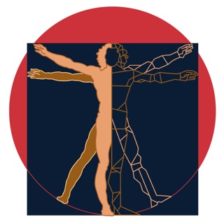In 1979, entirely independent of one another, three articles appeared that became very influential, and mark a kind of beginning point for contemporary evolutionary cognitive archaeology. Anthropologist Sue Taylor Parker and Neurobiologist Kathleen Gibson wrote “A developmental model for the evolution of language and intelligence in early Hominids.” Archeologist John A.J Gowlette wrote “Complexities of cultural evidence in the Lower and Middle Pleistocene” while Archeologist Thomas Wynn wrote “The intelligence of later Acheulean hominds”
Again, let me emphasize that personally I do not take the position of any of the articles writer as I am more biased towards intelligent design. I am merely discussing the position of the different scholars in the field of cognitive archeology and how their thoughts have contributed to contemporary evolutionary cognitive archeology.
Parker and Gibson advanced in their paper that stages of development of intelligence and language in our species recapitulate the stages of their evolution, borrowing a concept originally conjured by developmental psychologist and philosopher Jean Piaget. Their paper proposed that the common ancestor of great apes and man displayed rudimentary forms of late sensorimotor and early pre-operational intelligence similar to that of one to four year old children and that the first Hominids displayed intuitive intelligence similar to that of four to seven year old children.
On the other hand both Thomas Wynn and John A. J Gowlett argues for the complexity of early hominid’s intelligence, however each of them has a different approach in arguing for the complexity of early hominid’s cognition. It is also my opinion both employed two different methods of reasoning to argue their cases. A.J Gowlett employed deductive reasoning in order to arrive at his conclusion, while Thomas Wynn established his case using inductive reasoning.
Reflecting the prevailing theoretical climate in human evolution which emphasized taxonomy and ecology during that time, Gowlett’s theory of cognition not only considers stone tools as indicia of early hominid’s intelligence he considers the contextual evidence an important indicator of intelligence as well.
Gowlett briefly cites Holloway’s work on fossil data and then discusses comparative stone tools data to compare stone tools typology. For Gowlett, stone tools such as bi-faces, which is operated as a multi-stage process with geographic separation stages, indicates powerful evidence for organized planning. The way bifaces are manufactured indicates remarkable levels of control on the part of the hominid making them.
Gowlett argues that a lot can be gained with regards to determining the intelligence of early hominids by studying the contextual evidence. As an example he cites the hominid’s careful selection of the materials that they use to manufacture their stone tools and the distances of transporting these material as indicative of goal seeking behavior, forward planning, habitual and systematic exploitation of the environment and cognitive mapping of the environment.
Taking both the complexities of the manufacturing process of the stone tools itself and the contextual evidence Gowlett believes that a whole range of things such as group size, territoriality and localized seasonal adaptations can then be inferred and be used as a basis for the complexity of the level of intelligence of the hominid’s that manufactured the stone tools in the archeological record.
For Thomas Wynn both the fossil data and comparative data are poor indicators of intelligence. Using fossil data will help poorly in determining intelligence as fossil data may tell us something about brain morphology and size but considering that we still do not have a better understanding on the relations between morphology physiology and behavior, such may prove not to be useful in determining intelligence. Using comparative data on the other hand allows us to isolate what is peculiar about human intelligence, but they cannot be used to reconstruct the actual details of development.
Thomas Wynn instead focuses on the manufacturing of the stone tools and the resulting products themselves to argue for the complexity of early Hominid’s intelligence. He believes that interpretation of intelligence can be made through the archeological record, as archeological data are the result of behavior that was organized by intelligence. He believes that an intelligence theory is necessary in order to enable us to investigate the intelligence of pre-historic hominids. He then argues his case by using Piagetian genetic epistemology. In particular, he argues his case by using the Piagetian concepts of reversibility and conservation to assess the spatial concepts used by early hominids.
Thomas Wynn assessed the artifacts from Isimila Pre-historic Site in Tanzania and concluded that the complex geometric relationships of the stone tools from there were not accidentally imposed and that early hominids that manufactured them have operational intelligence. He believes the thinking of these early hominids as equivalent to that of modern humans in terms of organizational ability. The Operational intelligence of these hominids might tell us nothing specific about the content of the mind and as to whether or not they had formal language, grammar, a numbering system, a yearly schedule for resource exploitation, complex kinships system or cosmogonies, however Wynn believes that operational intelligence tells us a great deal about the capabilities early hominids posses for organizing physical phenomena. Based on this he concludes that early hominid knappers were not significantly less intelligent than modern adults.
 Hi ! my name is Zigfred Diaz. Thanks for visiting my personal blog ! Never miss a post from this blog. Subscribe to my full feeds for free. Click here to subscribe to zdiaz.com by Email
Hi ! my name is Zigfred Diaz. Thanks for visiting my personal blog ! Never miss a post from this blog. Subscribe to my full feeds for free. Click here to subscribe to zdiaz.com by Email
You may also want to visit my other blogs. Click here to learn more about great travel ideas.

Leave a Reply